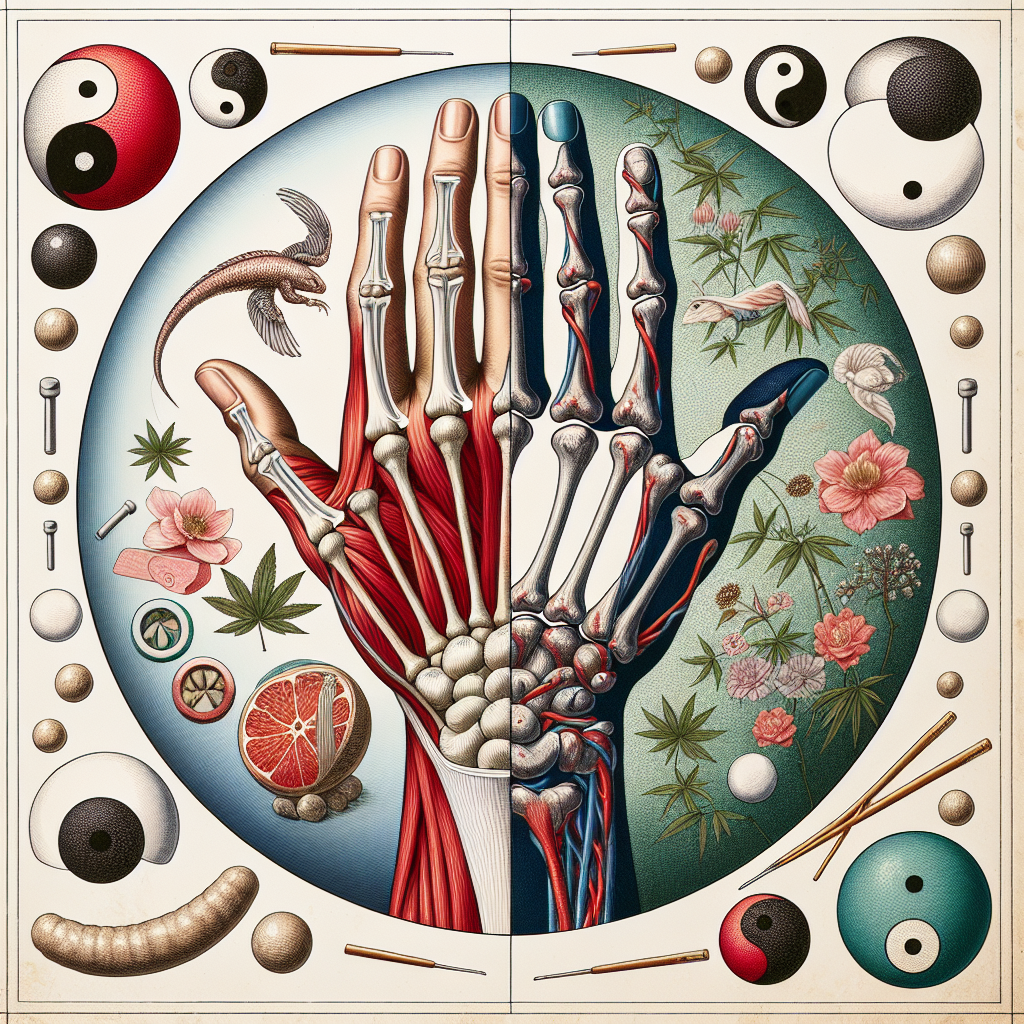Blending the Best of Both Worlds: A Comprehensive Approach to Arthritis Treatment with Western and Eastern Therapies
Arthritis, a condition characterized by inflammation, stiffness, and pain in the joints, affects millions of people worldwide. As the prevalence of arthritis continues to rise, so does the search for effective treatment methods. Western medicine and Eastern therapies offer distinct approaches to managing arthritis, each with its own merits and limitations. Rather than viewing these approaches as mutually exclusive, a comprehensive strategy that blends the best of both worlds may offer the most effective relief for those suffering from arthritis.
Understanding Arthritis
Arthritis encompasses over 100 different types, with the most common being osteoarthritis (OA) and rheumatoid arthritis (RA). Osteoarthritis is a degenerative joint disease that typically affects older adults, resulting from the wear and tear of cartilage. Rheumatoid arthritis, on the other hand, is an autoimmune disorder that causes the immune system to attack the joints, leading to inflammation and deformity.
Western Medical Approaches
Pharmacological Treatments
Western medicine primarily focuses on symptom management and improving the quality of life. Nonsteroidal anti-inflammatory drugs (NSAIDs) like ibuprofen and naproxen are frequently prescribed to manage pain and inflammation. In more severe cases, corticosteroids and disease-modifying antirheumatic drugs (DMARDs) such as methotrexate are utilized. Biologic agents like TNF inhibitors have also emerged as potent options for controlling rheumatoid arthritis.
Physical Therapy
Physical therapy is another cornerstone of Western arthritis treatment. Tailored exercise programs aim to improve joint function, enhance muscle strength, and increase range of motion. Physical therapists employ various modalities, including ultrasound, electrical stimulation, and manual therapy, to alleviate pain and improve mobility.
Surgical Interventions
When conservative treatments fail, surgical options such as joint replacement or arthroscopy are considered. These procedures can provide significant relief and improve the quality of life, although they come with their own set of risks and potential complications.
Eastern Approaches
Traditional Chinese Medicine (TCM)
Traditional Chinese Medicine (TCM) offers a holistic approach to arthritis, focusing on the body’s balance and energy flow. Acupuncture, one of the most well-known TCM practices, involves inserting fine needles into specific points on the body to stimulate energy flow (Qi) and alleviate pain. Studies have shown that acupuncture can provide significant relief for arthritis symptoms, often with fewer side effects than pharmacological treatments.
Herbal Medicine
TCM also utilizes herbal medicine to treat arthritis. Formulas such as Du Huo Ji Sheng Tang and Gui Zhi Shao Yao Zhi Mu Tang are commonly prescribed to reduce inflammation and improve joint function. These herbal remedies are often customized to meet the individual needs of patients, offering a personalized approach to treatment.
Ayurveda
Ayurveda, an ancient Indian system of medicine, also offers valuable insights into arthritis management. Ayurvedic treatments focus on balancing the body’s doshas (Vata, Pitta, and Kapha) and often include dietary modifications, herbal supplements, and detoxification procedures like Panchakarma. Specific herbs like turmeric and ashwagandha have anti-inflammatory properties and are frequently used in Ayurvedic practice.
Mind-Body Practices
Eastern medicine places a strong emphasis on the mind-body connection. Practices such as yoga, tai chi, and qigong are recommended to improve flexibility, reduce stress, and enhance overall well-being. These exercises can be particularly beneficial for arthritis patients, as they are low-impact and promote joint health.
Comparing and Contrasting Western and Eastern Approaches
Symptom Management vs. Holistic Healing
Western medicine excels in symptomatic relief and offers quick solutions through medications and surgeries. However, these treatments often come with side effects and do not address the underlying causes of arthritis. Eastern therapies, on the other hand, focus on holistic healing and aim to restore balance within the body. While these methods may take longer to show results, they often provide a more sustainable approach to health.
Individualized Treatment Plans
Both Western and Eastern approaches recognize the importance of individualized treatment plans, but they achieve this in different ways. Western medicine relies on diagnostic tests and clinical guidelines to tailor treatments, while Eastern medicine uses diagnostic techniques like pulse and tongue analysis to create personalized herbal formulas and treatment strategies.
Integration for Optimal Outcomes
The integration of Western and Eastern therapies can offer a more comprehensive approach to arthritis treatment. For example, a patient may use NSAIDs for immediate pain relief while also undergoing acupuncture sessions to address the root causes of inflammation. Similarly, physical therapy can be complemented with yoga or tai chi to enhance joint function and reduce stress.
The Future of Arthritis Treatment
The future of arthritis treatment lies in a more integrative approach that combines the strengths of both Western and Eastern modalities. Research is increasingly supporting the efficacy of Eastern therapies, and more healthcare providers are beginning to recognize the benefits of a holistic approach. Collaborative care models that bring together rheumatologists, physical therapists, acupuncturists, and herbalists can offer a multifaceted treatment plan tailored to the unique needs of each patient.
Conclusion
Arthritis is a complex condition that requires a multifaceted approach to treatment. Western medicine offers effective symptom management through medications and surgical interventions, while Eastern therapies provide holistic solutions that address the underlying causes of arthritis. By blending the best of both worlds, patients can achieve more comprehensive and sustainable relief from arthritis symptoms. As the medical community continues to embrace integrative care, the future looks promising for those seeking effective and holistic solutions for arthritis.

